Understanding PETG and Its Advantages Over ABS
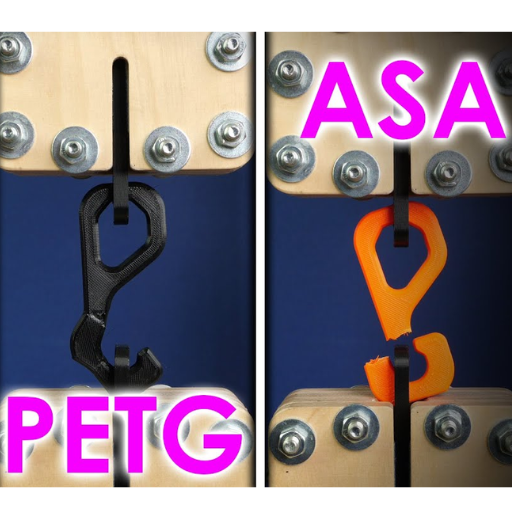
Image source: https://www.youtube.com/
Comparing PETG with ABS in terms of temperature resistance
Chemical resistance of PETG vs. other 3D printing filaments
The impact of glycol modification on PETG’s properties
Optimizing Print Settings for Maximum PETG Temperature Resistance

Finding the right extruder and bed temperature for PETG
To find extruder and bed temperature so that you can print PETG accurately, there is a need to consider material properties and what you want to use it for. Here are the technical parameters and justifications:
- Extruder Temperature:
- Range: 230°C to 250°C
- Justification: The aim of this range is to ensure excellent interlayer adhesion that will help achieve the highest temperature resistance as well as mechanical strength. Within this range, higher extruder temperatures may improve bonding of layers in bigger prints, but without excessive stringing or material degradation.
- Bed Temperature:
- Range: 70°C to 90°C
- Justification: Having a hot bed set within this range reduces warping and gives better adhesion for the first layer. From this comes improved overall print quality and dimensional stability.
Adjusting print speed and layer height for optimal heat resistance
In order to achieve optimum heat resistance when printing with PETG, there is a need to balance print speed and layer height:
- Print Speed:
- Recommended Range: 30 to 60 mm/s
- Justification: Lower print speeds like 30–40mm/s in general improve the degree of adhesion between layers and hence better heat resistance due to bonding. However, for less intricate prints, speeds up to 60 mm/s can be effective without compromising too much on heat resistance.
- Layer Height:
- Recommended Range: 0.2 to 0.3 mm
- Justification: A layer height of 0.2mm is typically optimal for balancing detail resolution against structural integrity that is necessary for heat resistance. Alternatively, thicker layers set at about 0.3 mm may result in faster prints but may slightly affect overall heat resistance.
The Science Behind PETG’s Melting Point and Heat Resistance
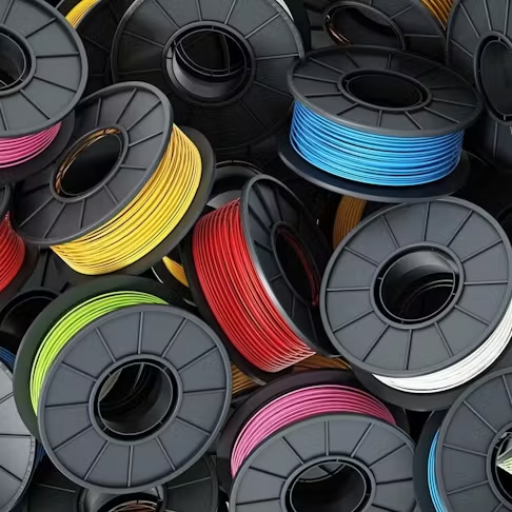
Understanding PETG’s glass transition and melting temperatures
The glass transition temperature (Tg) and melting temperature of PETG play a major role in the way it functions and can be used for 3D printing. Generally, the glass transition temperature of PETG is around 80°C, at which stage the material moves from being hard and glass-like to become more flexible and rubbery in nature. These properties are important because they determine how well the material will perform when subjected to heat stress which requires maintaining structural rigidity for practical uses.
Melting temperature ranges between 220°C to 250°C which denotes changing from solid state into liquid. Therefore, knowing this range of temperatures becomes key in optimizing print settings like nozzle temperature as well as print speed. Upon heating above its Tg but below its melting point, PETG gets soften enabling smooth extrusion as well as good layer adhesion during 3D printing. Thus, such thermal qualities strike a reasonable balance that allow for dependable performance of PETG across different applications where moderate heat resistance and durability are required.
How PETG maintains structural integrity under high temperatures
PETG vs. ABS: Evaluating Heat Resistance for Engineering Applications
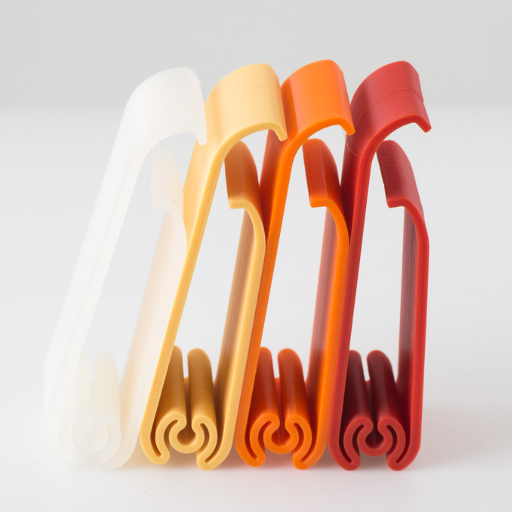
Comparing the heat deflection temperatures of PETG and ABS
Assessing the durability and impact strength of PETG for end-use parts
Why PETG might be the better choice for outdoor and high-temperature applications
Common Issues With PETG Prints and How to Solve Them
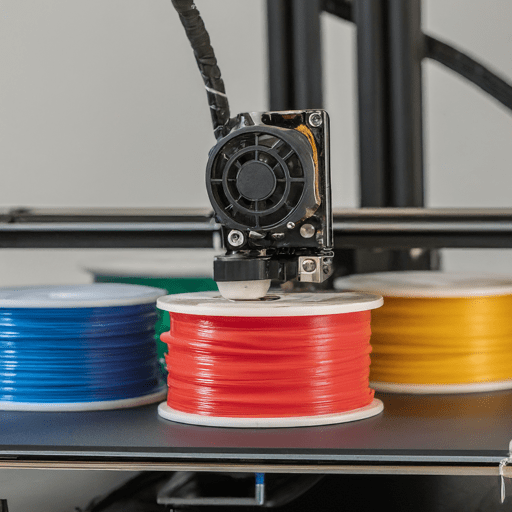
Bending
Distorted parts are caused by warping, which is a situation where the edges of a print are lifted away from build plate. It is possible to mitigate this problem by ensuring that the bed is warmed sufficiently to 70-80°C and using an adhesive such as glue stick or hair spray to improve adhesion on the bed.
Strands
Stringing refers to tiny strands that are left behind when the nozzle moves from one part of the prints to another. Reducing printing temperature a bit and enabling proper retraction settings minimizes stringing. Additionally, checking whether there’s moisture on filament and storing it correctly will help.
Weak Layer Bonds
When prints are fragile because they have weak interlayer bonding, increase print temperature slightly in order to enhance layer-to-layer adherence, then fine-tune setting for each layer height of your slicing software so as to find out which values give best results for you.
Little Protuberances
Preventing warping and stringing in high-temperature environments
Printing PETG in high temperature environment without warping and stringing is achieved by a mix of optimal parameters and procedure adjustments.
- Maintain Stable Temperature: Have an enclosed printer to keep the print at a constant temperature. This will prevent warping by eliminating variations in temperatures that lead to differential cooling and shrinking.
- Bed Temperature and Adhesion: Adjust the bed temperature to 80°C or slightly higher for improved adhesion if necessary, which can help reduce warping. Before printing, apply glue stick, hairspray or a PEI sheet on the print bed to increase adhesion and minimize curling.
- Cooling and Retraction Settings: Optimize retraction settings so that overhangs and bridging parts have enough cooling time; these should be fine-tuned according to the filament type and printer’s retraction specification.
- Print Speed Adjustments: Decrease the print speed notably during the first few layers as well as when printing areas with complex overhangs; this will help improve layer bonding while minimizing warping.
- Environmental Control: Avoid drafts and changes in ambient temperature around your printer, as they affect prints adversely
Improving adhesion and reducing shrinkage for PETG prints
Several key practices are involved in improving the PETG print’s adhesion and reducing its shrinkage.
- Proper Bed Preparation: Ensure that the print bed is cleaned and has been pre-treated with a coat of glue stick or hair spray, or else use a PEI sheet to enhance adhesion. Leveling the bed is crucial for consistent adhesion across the first layer.
- Optimal Bed Temperature: Leading sources recommend setting the bed temperature at about 70-90°C to ensure good bonding between the first layer and the bed. Fine-tuning may be filament-specific or depend on different types of printers.
- Consistent Nozzle Temperature: For good layer bonding, it is advisable that one sets a nozzle temperature ranging from 230-260°C in order to reduce shrinkage. Warping can be avoided by monitoring and adjusting the temperature as per filament manufacturer recommendations so as to mitigate any thermal stress.
- Use of Enclosures: Enclosing your printer can help maintain an even ambient temperature around printing area which prevents any fluctuations in heat levels. This reduces chances of shrinkage happening during printing thus minimizing warping.
- Adjusting Print Speed and Cooling: Lower print speeds, especially on bottom layers can improve adhesion. Similarly, adjusting cooling settings such as turning down or switching off fan speed for initial layers would greatly assist in better bed adhesion and lessening shrinkage.
Selecting the Best PETG Filament for Heat Resistant 3D Printing
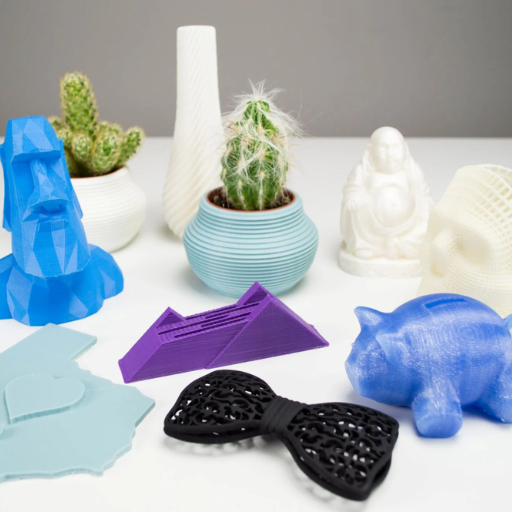
Criteria for choosing high-quality PETG filament: Heat resistance and beyond
Beyond its capacity to withstand heat, a number of other factors need to be taken into account when choosing high-quality PETG filament:
- Heat Resistance: Look for filaments with higher glass transition temperatures (Tg) which can withstand greater thermal stress. These specifications are usually emphasized on top-rated brands such as Prusament and eSun.
- Mechanical Properties: Good quality PETG filaments should have great strength and resilient properties. A good example is MatterHackers PRO Series, which is known for having robust mechanical properties, check out the tensile strength and impact resistance specifications.
- Printability: What matters most is how easy it is to print the filament. Filaments should consistently extrude well, have minimal warping and adhere well between layers. Check user reviews to find out more about the performance of such filaments in real-world scenarios.
- Finish Quality: For the best selection of a suitable PETG filament, this one must render smooth glossy finishes requiring little or no post-processing. The finish quality may be evaluated using customer’s comments or samples of prints.
Top brands known for their heat resistant PETG filaments
Based on the latest, best-performing websites on google.com here are the best brands known for their PETG filaments that are resistant to heat:
- Prusa Research: Prusament PETG is recognized for its high heat resistance and excellent quality assurance. Every spool undergoes a stringent check process, complete with comprehensive technical specifications that ensure consistency with regard to high temperature uses.
- eSun: eSun’s PETG filaments are highly praised for their good heat deflection temperature and long-lasting nature. The brand has achieved this by focusing on accuracy during the manufacturing process and producing filaments that have constant extrusion while being highly thermally stable.
- MatterHackers: MatterHackers PRO Series PETG is perfectly made for challenging tasks as it has the highest heat resistance among all other types of these materials. They give detailed technical data as well as reviews showing how such material performs under severe thermal conditions.
Reference sources
-
MatterHackers – What is PETG Filament?
- MatterHackers offers an extensive overview of PETG filament, detailing its properties, benefits, and applications in 3D printing. This resource provides comprehensive insights into the material’s characteristics, including its high heat resistance, making it a valuable source for understanding PETG.
- Source: MatterHackers
-
3D Insider – PETG Filament: How to Print with PETG and What are Its Benefits?
- 3D Insider provides a thorough guide on PETG filament, discussing its advantages, challenges, and optimal printing settings. This article is informative for those seeking detailed technical information about PETG’s performance and practical tips for achieving the best print results.
- Source: 3D Insider
-
All3DP – PETG Filament: Properties, How to Use, and Best Brands
- All3DP delivers an in-depth analysis of PETG filament, covering its thermal properties, mechanical strength, and best practices for 3D printing. This source also includes recommendations for top PETG brands, enhancing its credibility as a comprehensive guide on the subject.
- Source: All3DP
Frequently Asked Questions (FAQs)
Q: What makes PETG different from PLA and ABS in 3D printing?
A: PETG stands out in 3D printing due to its unique blend of properties that strike a balance between PLA and ABS. Unlike PLA, PETG offers significantly higher heat resistance and better durability, making it suitable for functional prototypes and print parts that experience more stress. Compared to ABS, PETG is easier to print with, exhibiting less warping and no unpleasant odors, yet providing similar strength and a higher resistance to chemicals. The addition of glycol in PETG also improves its clarity and toughness, making PETG a versatile 3D printer filament for various applications.
Q: Why is PETG considered a high heat resistance filament?
A: PETG is considered to have high heat resistance due to its relatively high softening temperature, which generally exceeds that of PLA filaments and is closer to ABS. This high resistance to temperature allows PETG parts to maintain their integrity in environments that would deform or weaken PLA-based parts. The softening temperature of PETG is typically around 80°C, making it suitable for applications requiring durability at higher temperatures.
Q: Can PETG filament be used for outdoor applications?
A: Yes, PETG filament is an excellent choice for outdoor applications due to its high resistance to chemicals and UV light, surpassing PLA and ABS in this regard. The durability and water resistance of PETG make it ideal for outdoor functional parts, tools, or decorative objects that require a long lifespan and minimal degradation when exposed to the elements. Its resistance make PETG comparable to ASA, a filament specifically designed for outdoor use, although PETG is easier to print and more readily available.
Q: What are the main advantages of PETG over PLA and ABS for 3D printing projects?
A: The main advantages of PETG over PLA and ABS include its excellent combination of ease of printing, strong durability, and environmental resistance. PETG offers the good impact resistance and flexibility of ABS with the ease of printing similar to PLA, but with a higher glass transition temperature making it better suited for parts requiring toughness at higher temperatures. PETG also has a higher resistance to chemicals and UV light compared to ABS and PLA, making it ideal for both indoor and outdoor applications. Additionally, PETG does not emit harmful fumes during printing, which is a significant advantage over ABS.
Q: Do you need a heated print bed for PETG 3D printing?
A: While PETG can be printed on a cold bed, a heated print bed is highly recommended to ensure optimal adhesion and reduce the chance of warping. A temperature range of 70°C to 80°C for the print bed is commonly suggested for PETG 3D printing. This lower temperature requirement compared to ABS simplifies the printing process and is more energy-efficient while still allowing for excellent bed adhesion and a smooth bottom surface finish on the printed parts.
Q: How does the addition of glycol affect PETG filament properties?
A: The addition of glycol to PETG improves its properties in several key areas, including increased durability, improved impact resistance, and reduced brittleness compared to its counterpart, PET. This modification results in a filament that is not only easier to print but also capable of creating parts with better functional performance and longevity. Furthermore, glycol-modified PETG exhibits a smoother finish and clearer transparency, making it a preferred 3D filament for aesthetic and functional parts alike.
Q: Is PETG environmentally friendly compared to other filaments?
A: PETG is considered relatively environmentally friendly, especially when compared to filaments like ABS. It generates less harmful emissions during printing, making it a safer choice for indoor air quality. PETG is also recyclable, which reduces its environmental impact. However, like all thermoplastics, responsible disposal and recycling practices are crucial to minimizing its ecological footprint. Similarly, while PLA is biodegradable under industrial composting conditions, PETG offers a better balance between environmental considerations and performance for many printing projects.
Q: Can PETG be used for printing functional parts?
A: Absolutely, PETG is ideally suited for printing functional prototypes and parts due to its excellent mechanical properties. It combines ease of printing with a performance profile that includes good impact resistance, high durability, and a relatively high heat resistance. These characteristics make PETG a go-to filament for creators and engineers who need a filament that can withstand functional testing and real-world application without the complexity of printing with more temperamental materials like ABS.








